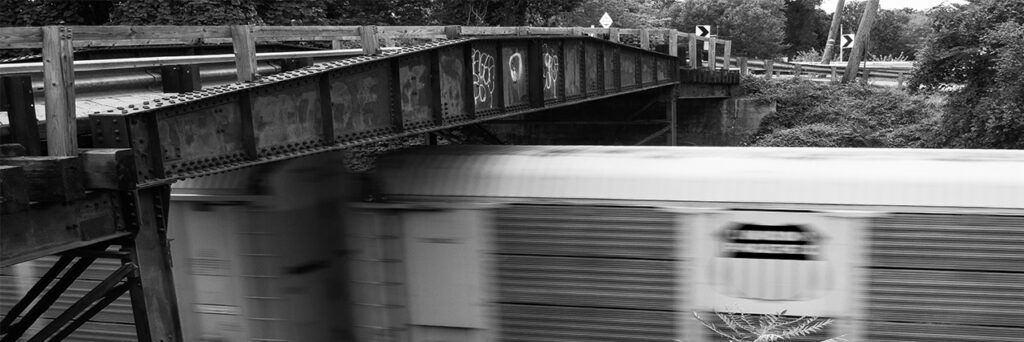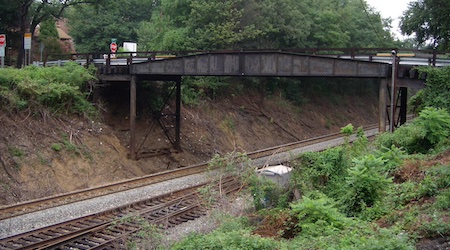For over 100 years, the single lane Talbot Avenue Bridge crossed over the Baltimore and Ohio’s railroad tracks, connecting an area known as Lyttonsville with downtown Silver Springs, Maryland. Lyttonsville was a free African-American community prior to the Civil War, named after Samuel Lytton who originally purchased four acres of farmland just outside Silver Spring in 1853. The railroad tracks created the boundary between Lyttonsville and the Silver Spring, where racially restrictive deed covenants prevented African-Americans from living, and businesses were governed by strict Jim Crow laws. The bridge provided Black residents access to employment, shopping, and recreational opportunities otherwise unavailable.
In 2019 the bridge was closed, dismantled, and removed from its site to make room for a new, wider overpass. The historic main span, a reused railroad turntable itself, was preserved and stored, with plans to place it on public display along the Georgetown Branch Trail.
During a Community Board Meeting, addressing the conservation of the Talbot Avenue Bridge, EverGreene conservators Kelly Caldwell and Meghan Page shared key findings from a condition assessment and material investigation. They provided expertise relative to an adequate 5-year storage plan and their later reuse. The Talbot Avenue Bridge fragments are conserved by EverGreene until their final re-installation, supporting a community effort to commemorate the unique history and culture of greater Lyttonsville.












